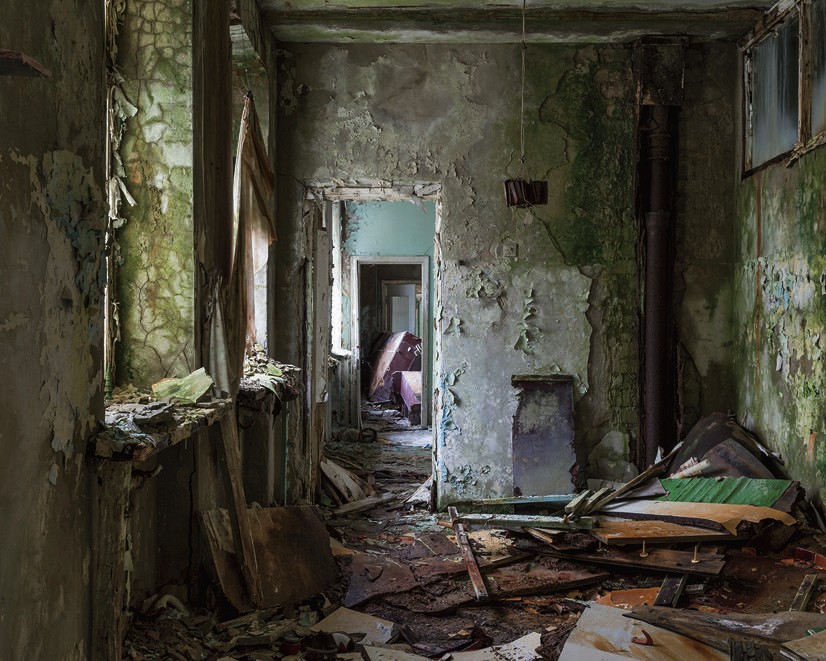Irradiant Sightings
David McMillan

David McMillan, Kindergarten Locker Room, Pripyat, 2012, ink-jet print, 36 x 44 inches. All photographs courtesy the artist.
When David McMillan first went to photograph the aftermath of the Chernobyl nuclear disaster in 1994, he intended to visit only once and then return to his home in Winnipeg. His initial visit was just for five days but on the final day he realized how complicated was the subject he was engaging. His subsequent response has made him the quintessential nuclear accidental tourist. Over the last 20 years, McMillan has returned to the site 18 times. The abandoned city of Pripyat and the Chernobyl Exclusion Zone is his muse; his subject has become time, its measure is nature’s reclamation of the site and man’s inevitable erasure from it.
In a forest scene a boat is swamped by foliage; in Basketball the peeling backboard and unhooked hoop hangs on a steel frame—the whole apparatus looks like an abandoned icon which has lost its original purpose. The bright green forest floor covers over any evidence of what might once have been a playing surface. In these photographs, nature is an inundation; culture is a relic.

Metal Fabrication Facility, Chernobyl, 2013, ink-jet print, 36 x 44.
McMillan is a superb photographer and when he turns his eye to the disaster site, the images he produces are utterly compelling. (Evidence of his discerning gaze was on exhibition in “Growth,” at the Martha Street Studio in Winnipeg from March 14 to April 25, 2014). In a photograph of a factory floor congested with barrels and steel machine parts, he gives us an image of irresistible beauty; a radiant light shines down from the ceiling and illuminates the delicate turquoise tinting on the walls and pillars. Similarly, in a photograph of the locker room in a kindergarten the green decaying walls look marbled and in harmony with the lavender patina that sits on objects at the distant end of the room.
McMillan doesn’t manipulate his sites or his images—“the colour you see is there,” he says—so we get what he sees in its fulsome, quiet elegance. He admits his quest is not aesthetic: “What I’m photographing isn’t inherently beautiful. It’s not like you can walk up to it as if it were a sunset.” He simply comes to the site as a photographer with the sole intention of making images that are new and that say something about a richer quality of experience.
View of the Forest is the image that stands in for the entire body of work that has occupied his attention for the last 20 years. From inside what was once a large window in a dental hospital we look into a forest that presses against the edge of the room. The floor is littered with large fragments of broken glass, there is an enamel bowl, another container for a long-dead plant, a single chair and the framing edges of mottled concrete. There seems to be no space between inside and outside, as if the order of things has been inverted. View of the Forest is also the view from the forest; we are looking out less than nature is looking in.
McMillan regards as “extraordinary and ultimately heartening the realization that nature really can survive. The earth will keep going no matter what we do with it,” he says, and his ongoing photographic project exquisitely records that recognition. ❚

